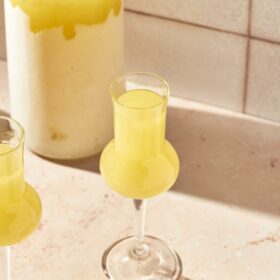Oh so easy to make and absolutely delicious, if you’ve never had a refreshing chilled glass of limoncello then this is your chance! This famous Italian lemon liqueur is sweet, zesty, and made with just 4 simple ingredients and little patience. It’s always served ice cold and makes the perfect ending to any meal.
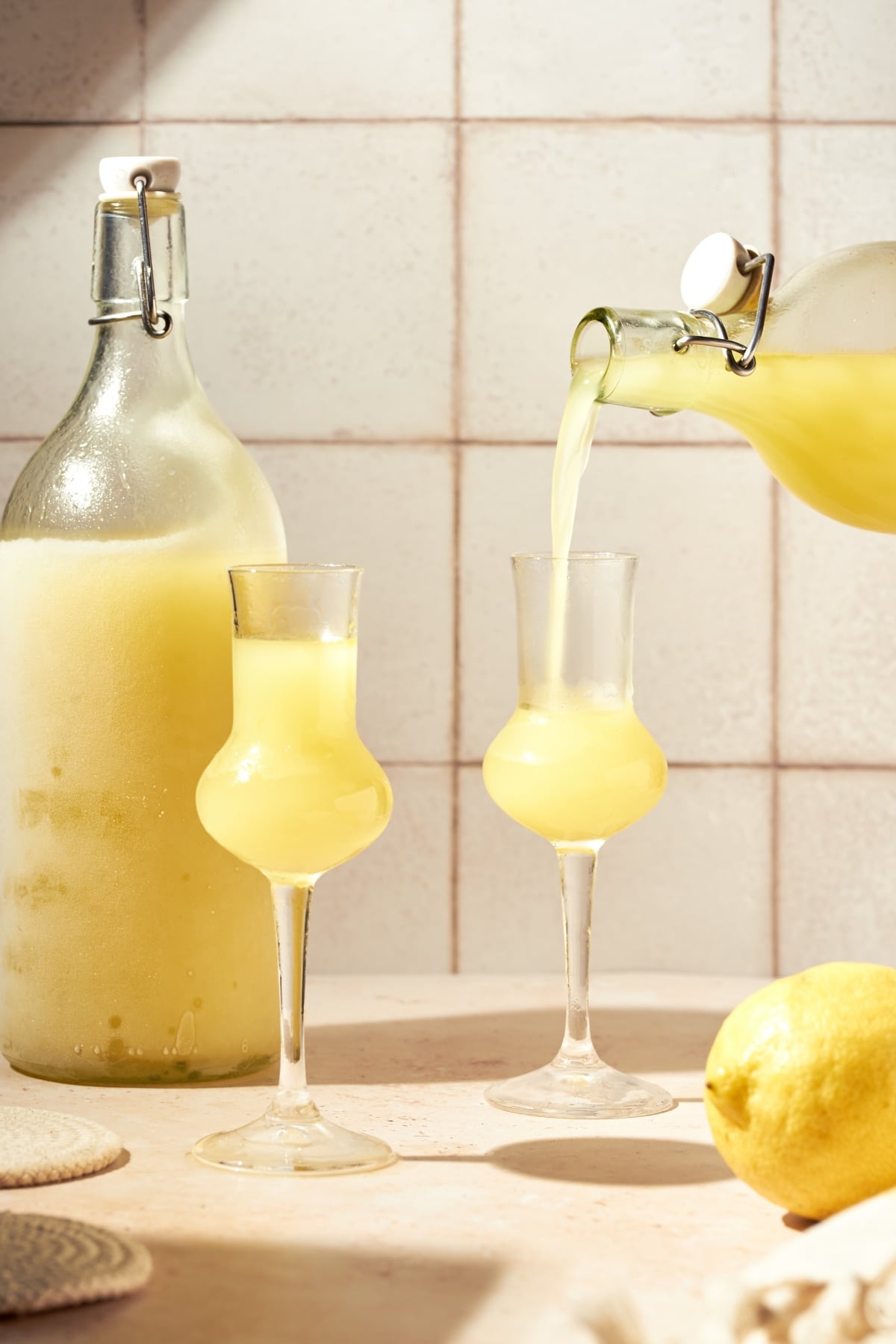
Also known as limoncino in Northern Italy, limoncello is a delicious lemon liqueur that was created in southern Italy along the Amalfi coast about 100 years ago by a woman named Maria Antonia Farace. It’s a very simple and uncomplicated sweet liqueur that is traditionally made with nothing more than a neutral alcohol base, fresh lemon zest, and simple syrup. Limoncello is typically stored in the freezer to be served very cold in a shot glass as an after dinner digestive drink following a big meal of Italian food.
Yet, this refreshing lemon liqueur can also be added to Italian cocktails like a Limoncello spritz or boozy lemonade. As well as, used in desserts like Chocolate Almond Limoncello Cake, ice cream, or lemon tarts.
It can even be used to make limoncello tiramisu by simply substituting the wine with limoncello and omitting the coffee. It’s absolutely delicious!
In Italy, limoncello is traditionally made with Sorrento lemons, which are a type of lemon that grows exclusively along the Amalfi coast. They are famous for the highly fragrant essential oils of their peel and sweet tart flavor. These characteristics make them perfect for infusing spirits to make limoncello. Yet, it’s not always possible to come by Sorrento lemons. Meyer lemons are a wonderful second choice, but you can use any lemon variety to make this Italian liqueur.
However, you should always use organic unwaxed lemons whenever possible. Because the zest of the lemons is macerated in alcohol the limoncello will absorb all the flavors and aroma of the peel. This includes any pesticides or wax that has been used on the fruit.
But if it’s not possible to find organic citrus you can gently scrub the lemons with a vegetable scrubber and a bit of warm water.
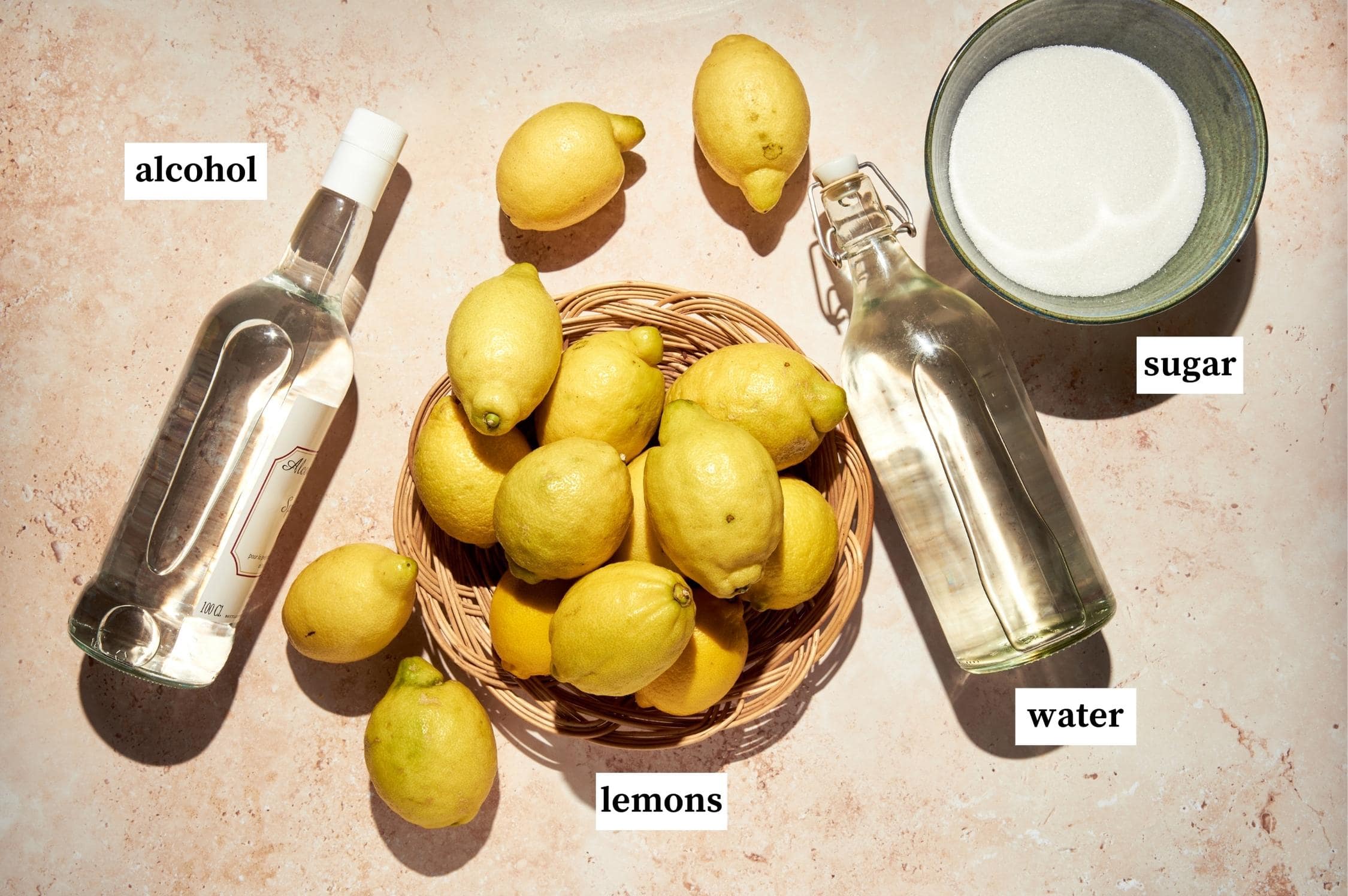
To start, make sure that you have washed and dried your lemons. You need to remove any wax or debris that is on the lemon skin photo 1.
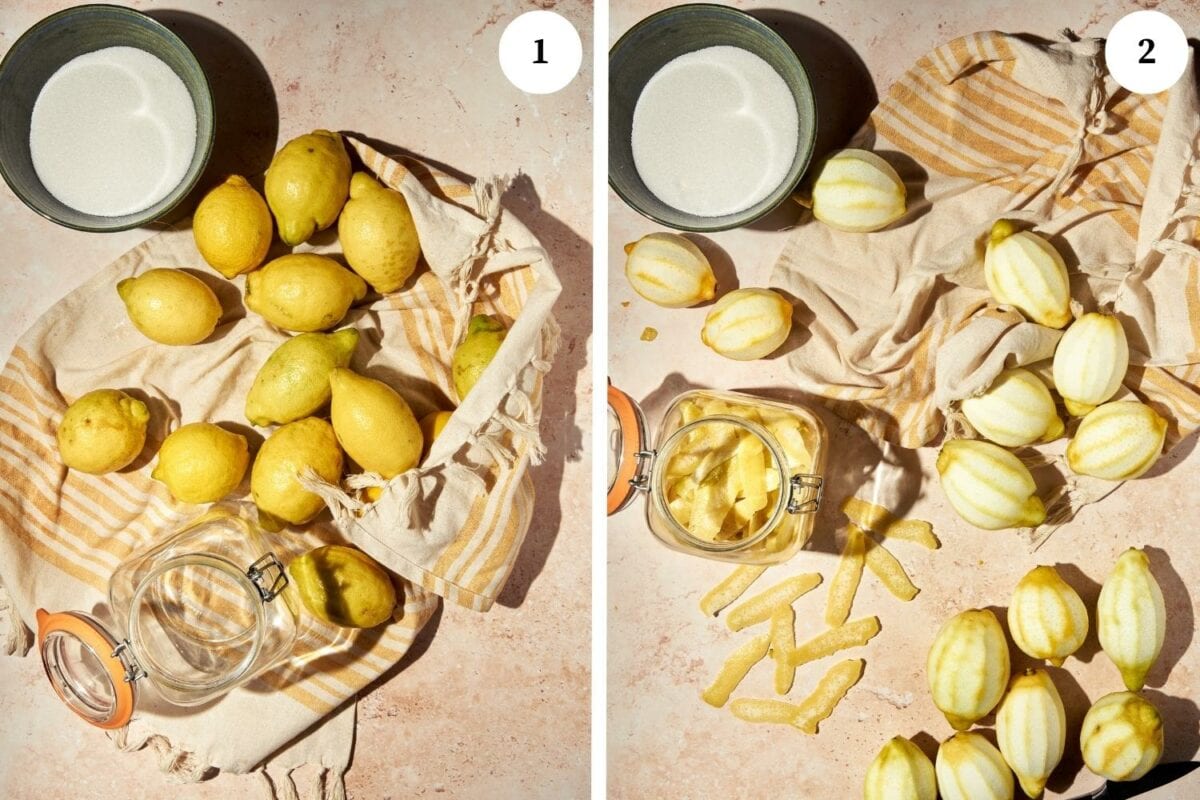
Next, peel the lemons with a sharp paring knife or potato peeler photo 2 and put the peels into a clean large glass jar photo 3-4.
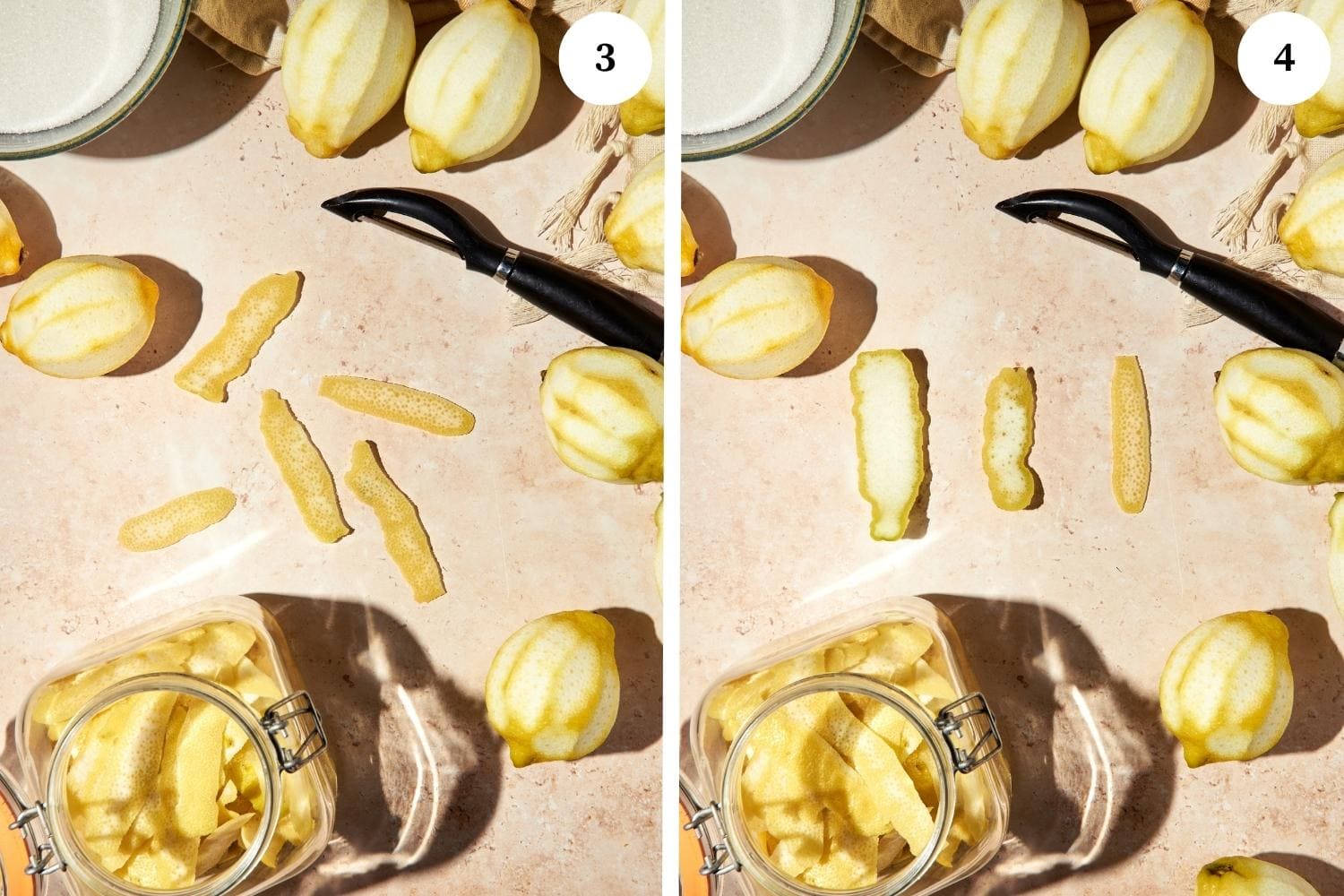
Then pour the alcohol over the lemon peels making sure that they are completely covered in liquid. Now, tightly seal the lid on the glass jar photo 5-6.
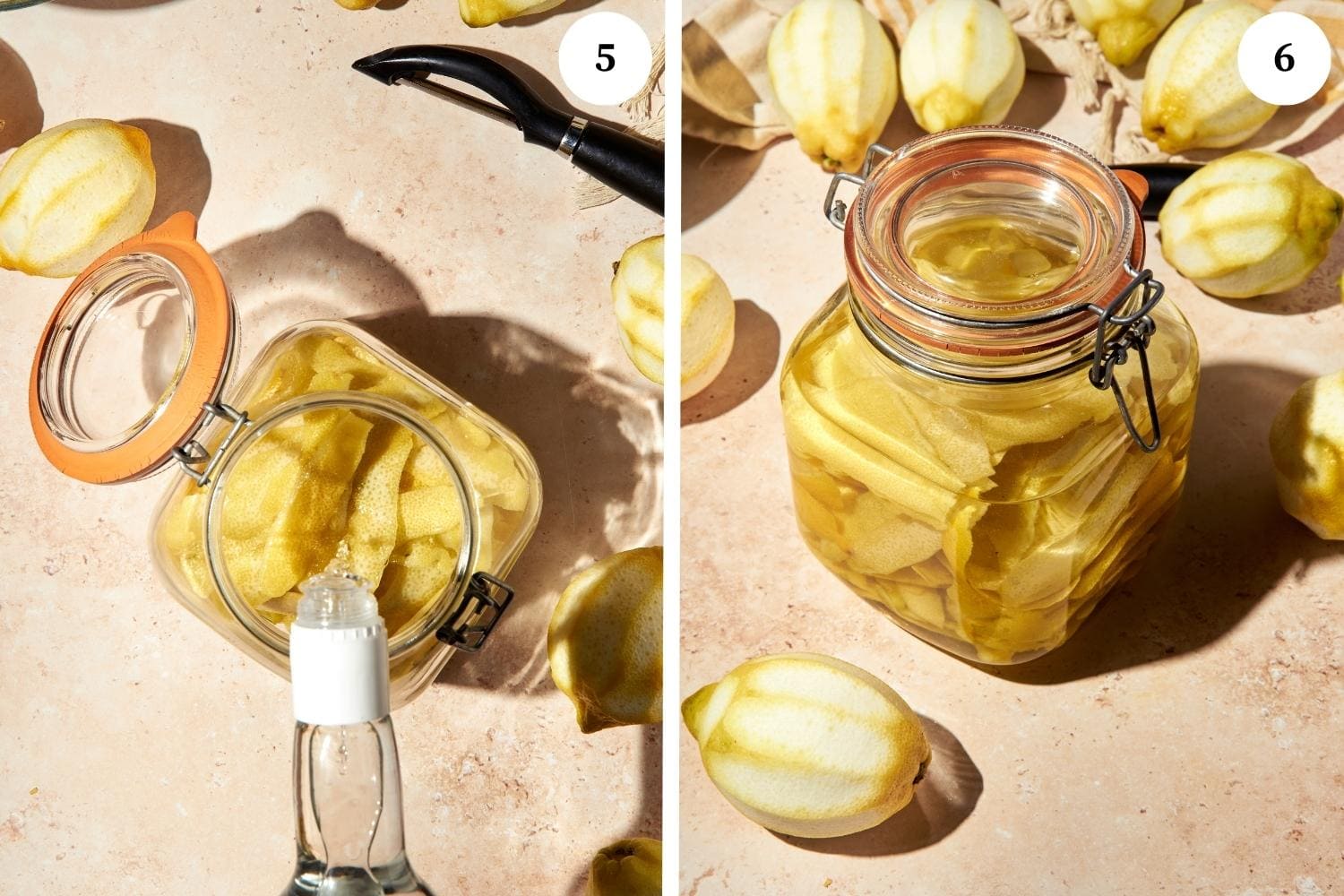
Once the lemon rinds and alcohol have been combined, put the sealed glass jar in a cool dark place out of direct sunlight for at least 4 days and up to 20 days. The longer you wait the more lemony your limoncello will become.
After the peels have had time to infuse the alcohol with lemony flavor, you can make the simple syrup. To do this, just heat the sugar and water together over medium heat until the sugar has completely dissolved. Then allow the mixture to completely cool photo 7-8.
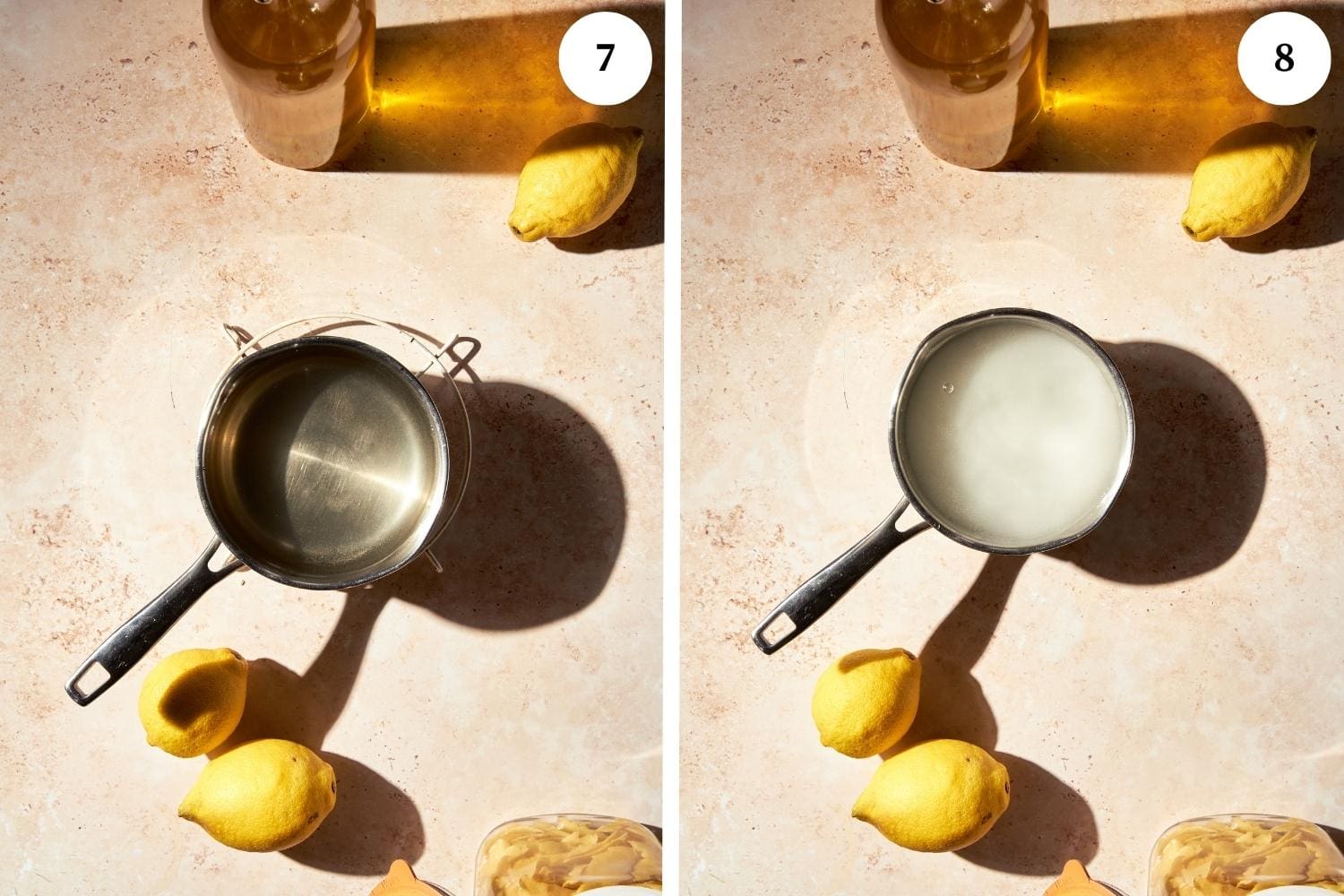
While the simple syrup is cooling, you can use a fine mesh strainer or coffee filter to begin straining the lemon-infused alcohol in the glass jar and discarding the lemon peels. You can also use a strainer with cheesecloth photo 9. The strained liquid should be a vibrant yellow color with a strong aroma from lemon peels photo 10. Then add the cooled simple syrup to the strained alcohol and mix them together.
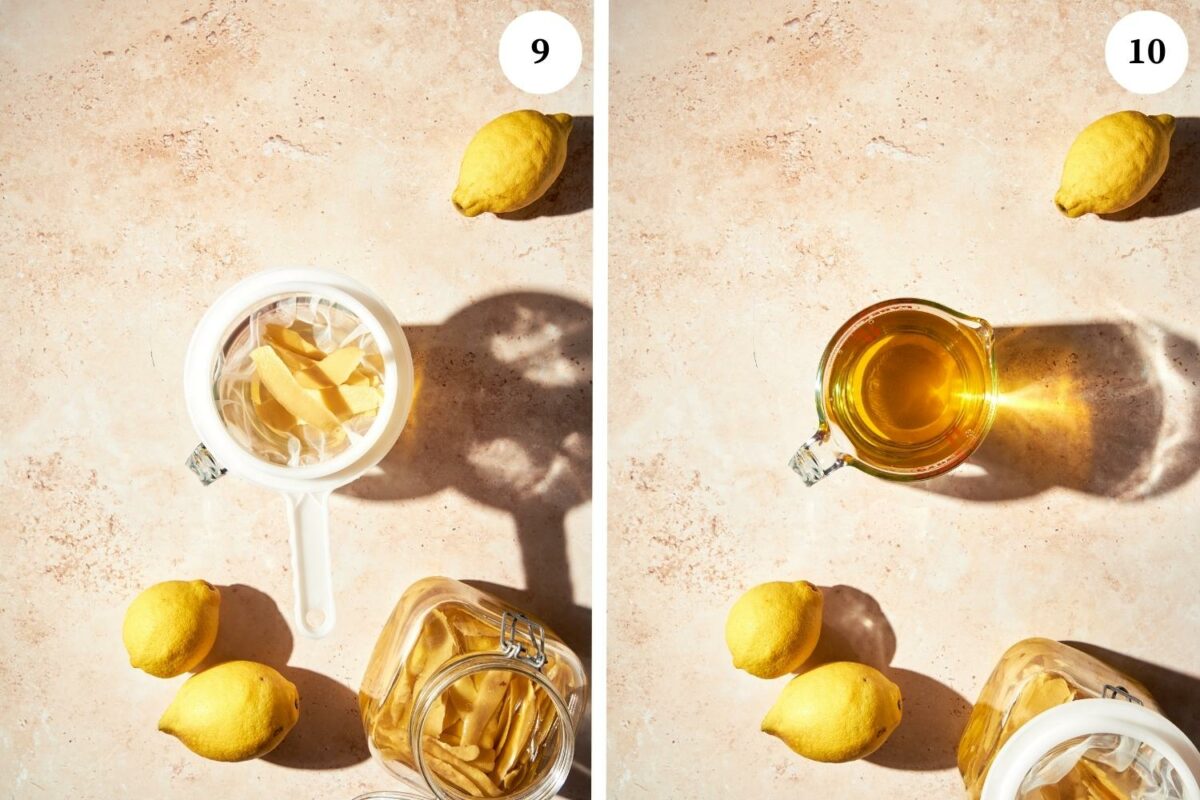
Now, pour the limoncello into bottles and seal them well photo 11-12.
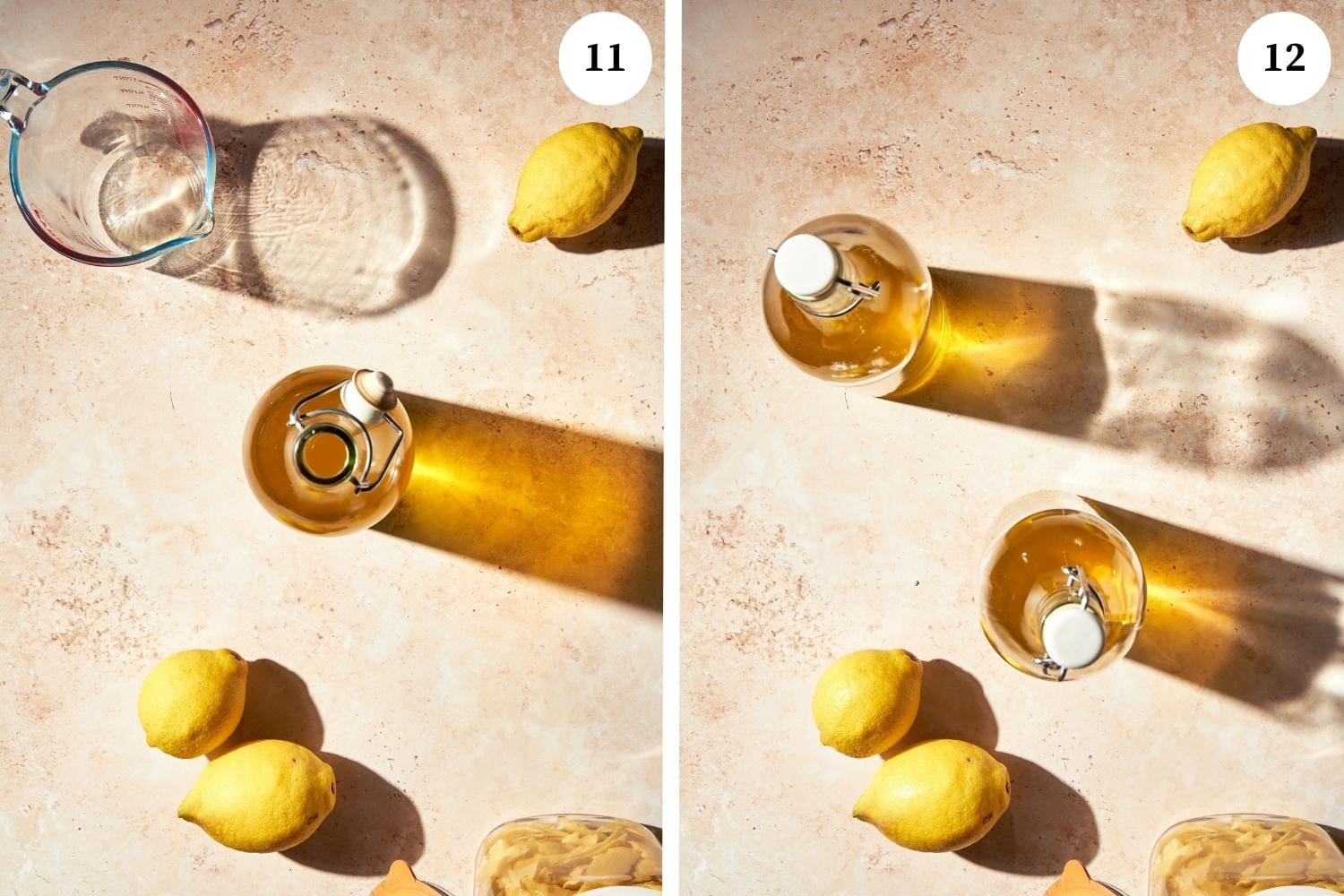
Then put the bottles in a cool dark place for at least 2 days and up to 10 days. Once again, the longer you let your batch of limoncello rest the better the flavor will be.
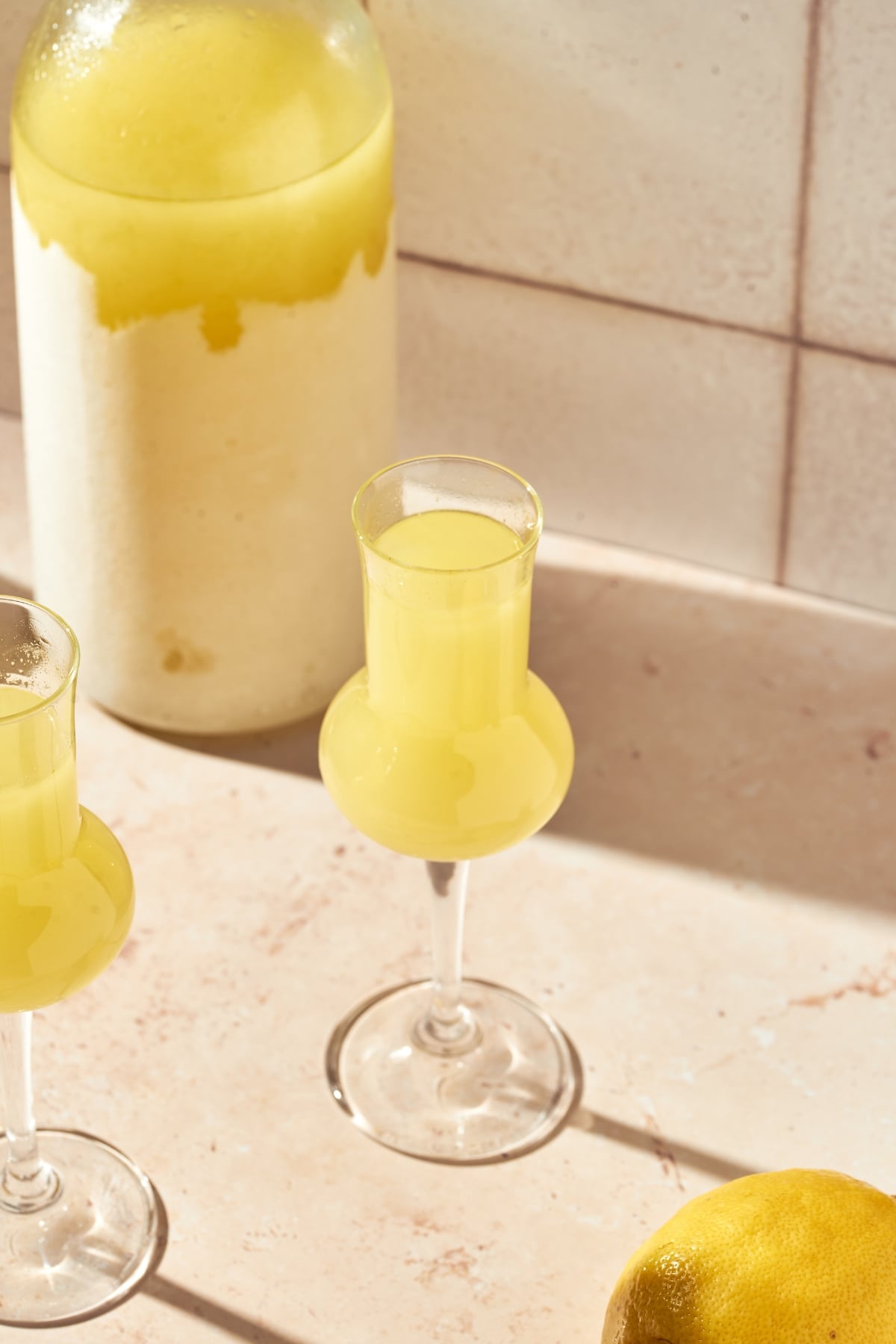
Obviously, for stronger limoncello, you need to grain alcohol or 100-proof vodka. These calculations below are provided to show you how to use both Everclear and vodka to make this homemade limoncello recipe and the approximate alcohol by volume (abv).
This step is fairly important to the outcome of your Italian limoncello and there are a few different ways to do it. You can use a very sharp knife, but the easiest way is to use a vegetable peeler. It does a fantastic job of peeling off just the zest.
Another way to remove the zest is by finely grating the lemons with a microplane. But regardless of how you choose to peel the lemons you want to make sure you only remove the yellow peel because the white pith can give your limoncello a bitter taste.
In the image below, on the far right, you can see an example of what the peel should look like when peeled correctly.
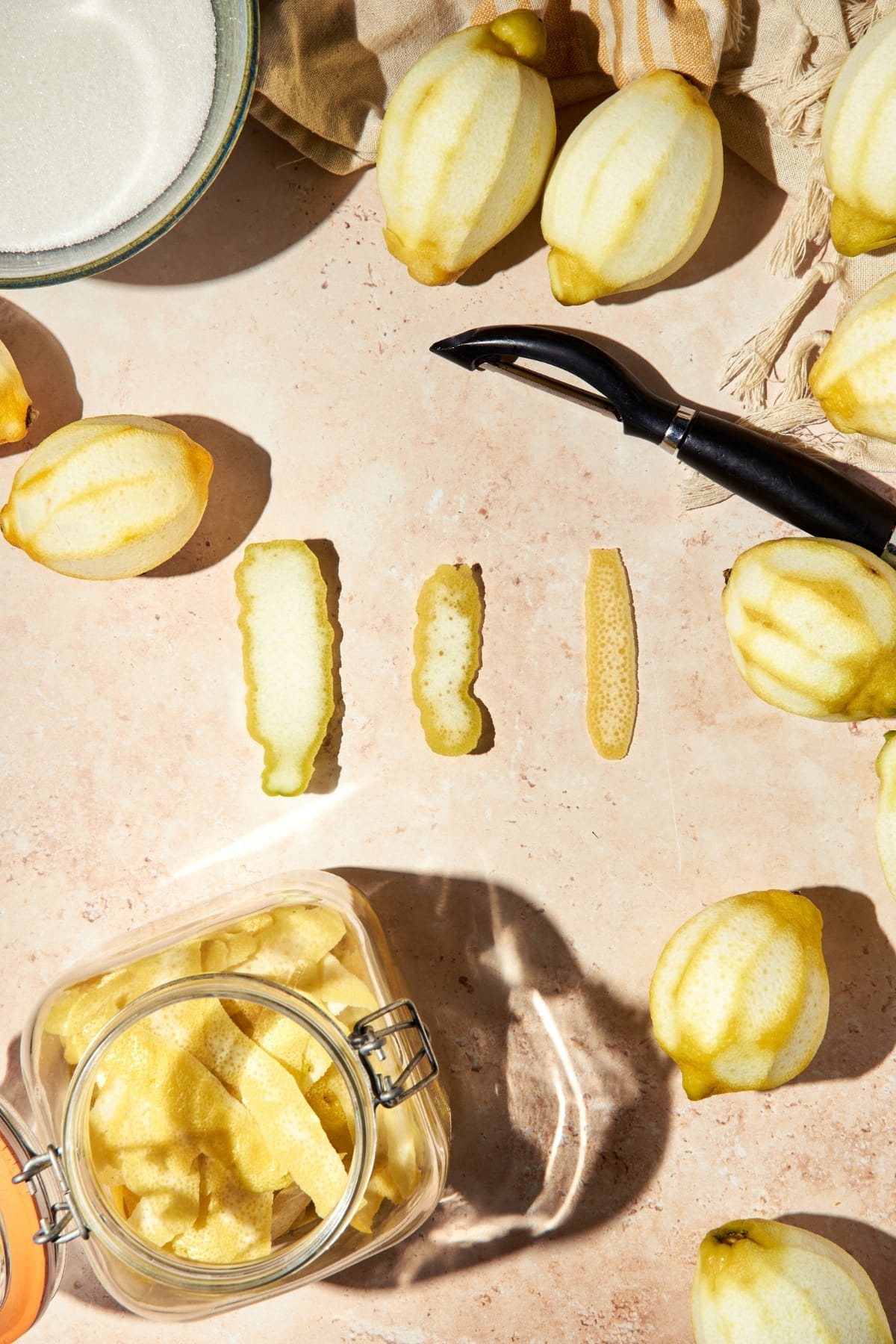
You’ve peeled all the lemons for your limoncello, but now you’ve got loads of leftover lemons. But not to worry, they don’t have to go to waste. And you can make more than just flavorful lemon tea, lemon water, or lemonade! The juice can be used to make this delicious Herby Lemon Risotto for dinner and Lemon Semifreddo for dessert! Or, the leftover fresh lemon juice can be used to make this scrumptious Chicken Scaloppine with Lemon and Herbs or this refined Beef Carpaccio Recipe With Orange and Lemon Vinaigrette Marinade!
Here are other Italian drinks to try it out:
Or use Limoncello to make this recipes:
A bottle of limoncello will keep at room temperature for a few days. But it’s best kept in the freezer for up to 3 months, which will keep this after dinner drink nice and cold!
Don’t worry if your limoncello is a little cloudy. This is called “the ouzo effect”, doesn’t impact the taste at all, and is a totally natural experience. It’s caused when the sugar from the simple syrup comes into contact with the essential oils of the lemon peels.
Yes, of course! Almost any citrus fruit with a peel can be used. You can use limes to make homemade limecello and tangerines to make a homemade mandarincello. The process is exactly the same and they are both absolutely delicious.
